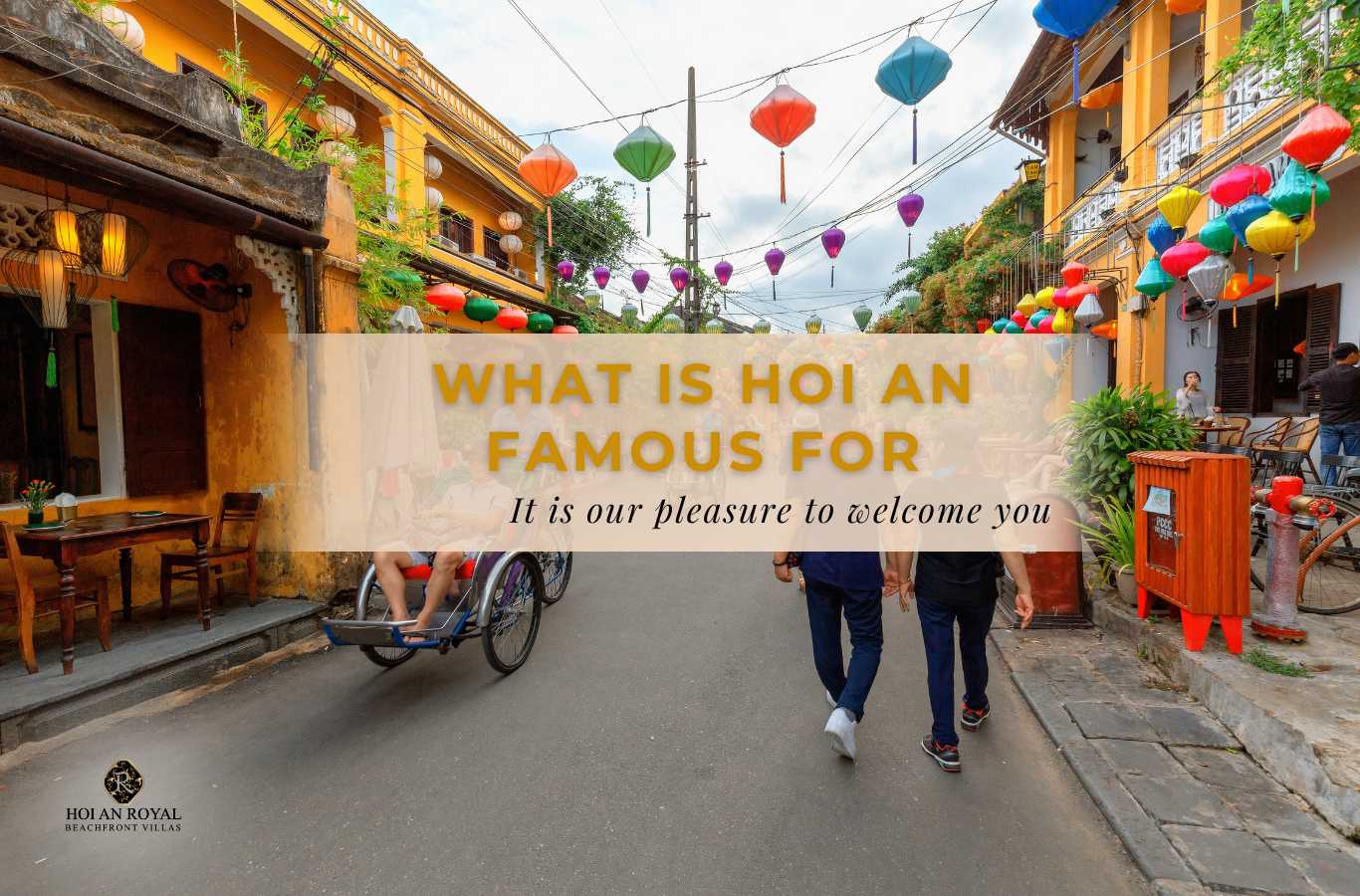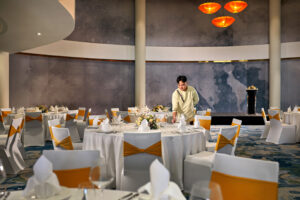You may have heard of Hoi An but still wonder what is Hoi An famous for? With its ancient architecture, unique cuisine, and rich traditional cultural experiences, Hoi An holds far more charm than you might expect. Let’s explore the captivating features that have made this ancient town renowned, in the article below by Hoi An Royal Beachfront Villas.
Table of Contents
ToggleHow was Hoi An founded?
Hoi An is known as a destination rich in history, culture, and architecture. More than just a peaceful ancient town, it is a living testament to the centuries-long exchange between Eastern and Western cultures.
The earliest foundations of Hoi An trace back over 2,000 years to the Sa Huynh culture. Later, this land became part of the Champa Kingdom and served as a major seaport in international trade, where goods such as agarwood, cinnamon, glass, and silk were exchanged with foreign merchants.
From the 15th century, Vietnamese settlers began to reclaim and develop the area. However, it was not until the late 16th century, when Nguyen Hoang took charge of Quang Nam, that Hoi An truly entered its golden age as an international trading port.
During the 17th and 18th centuries, Hoi An emerged as one of the busiest commercial hubs in the region. Streets were lively with merchants from China, Japan, Portugal, and the Netherlands—creating a diverse and culturally rich community.
By the 19th century, however, due to historical upheavals and war, the town’s role as a trading port gradually declined. Yet, its preserved features—moss-covered tile-roofed houses, ancient temples, Chinese assembly halls, and the Japanese Bridge—remain intact, turning Hoi An into a symbol of a bygone golden era.
In 1999, the ancient town was recognized by UNESCO as a World Cultural Heritage Site, attracting large numbers of visitors from around the world.

What is Hoi An famous for? 5 reasons tourists love this ancient town
Unique Ancient Town Architecture
Hoi An boasts over 1,000 ancient houses, almost perfectly preserved. The Hoi An ancient town architecture reflects a harmonious blend of Indochinese tradition, Chinese and Japanese influence, and Western touches—creating a truly distinctive and unmatched landscape.
The town is laid out in a chessboard pattern, with winding alleyways surrounded by moss-covered tile-roofed houses. Its iconic yellow walls, combined with intricately carved wooden doors, make the space warm and inviting.
At night, Hoi An transforms under the magical glow of thousands of colorful lanterns. This dazzling scene offers a poetic visual experience and draws countless visitors to stroll and take photos.
A standout within Hoi An’s architectural complex is the Japanese Bridge (Chua Cau)—a structure rich in Japanese style, built in the 17th century, and a must-visit stop on any ancient town journey.
In addition, Chinese assembly halls, Quan Cong Temple, other temples, and cultural museums contribute to the rich, multi-layered architectural landscape of the ancient town.
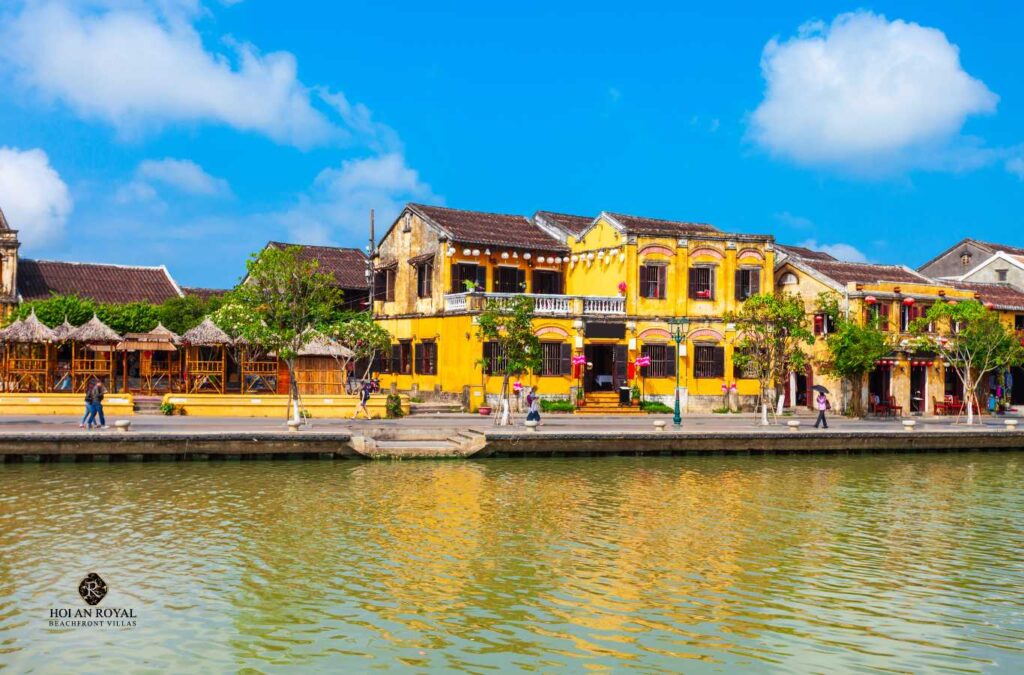
Distinctive Local Cuisine
Cuisine is an essential part when talking about Hoi An travel. The town is home to a variety of dishes that reflect authentic local flavors—simple yet unique, appealing to both domestic and international visitors.
- Hoi An bread (banh mi) is considered one of the best sandwiches in the world, with its crispy crust, savory meat filling, and fresh herbs creating an unforgettable taste.
- Cao lau is a signature dish closely associated with Hoi An. It features firm yellow noodles, rich broth, and fresh greens, resulting in a balanced and unique combination unlike any other noodle dish.
- Mi Quang is also a popular choice, typically served for breakfast or lunch. The soft noodles are accompanied by meat, shrimp, fresh herbs, crispy rice crackers, and a small amount of flavorful broth, delivering a rich and satisfying meal.
- Other beloved dishes include wonton dumplings, banh bao, banh vac, sweet soups, spring rolls, and fresh seafood—all highly favored by tourists.
In addition, Hoi An offers many eateries, night markets, and restaurants that serve Hoi An food specialties in atmospheric settings that reflect the charm of the ancient town—allowing guests to enjoy both the flavors and the local culture at the same time.
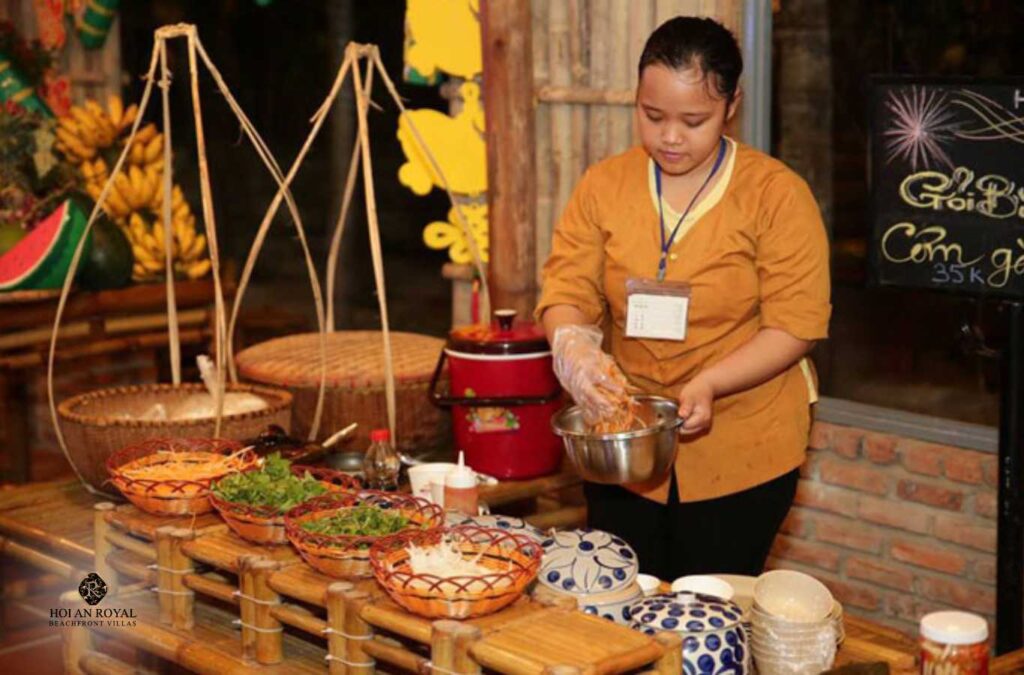
Unique travel experiences
One of the elements that make Hoi An so uniquely attractive is the range of immersive travel activities that create unforgettable emotional experiences for visitors.
- Admiring lanterns at night: When the sun sets, Hoi An Ancient Town transforms into a magical scene with thousands of colorful lanterns lit up, creating a poetic and peaceful atmosphere. Visitors can stroll along narrow streets, enjoy the tranquil vibe, and watch the shimmering reflections on the Hoai River.
- Releasing floating lanterns on the Hoai River: This traditional activity is especially popular on full moon nights and during festivals. Tourists can purchase a lantern, light a candle, and gently release it onto the river to wish for peace and good luck. The experience offers a sense of serenity and connection to the local culture.
- Visiting the Japanese Bridge – the symbol of Hoi An: The Japanese Bridge (Chua Cau) is not only an architectural icon but also a must-see on any ancient town tour. It clearly showcases the cultural intersection of Vietnam, Japan, and China in every detail.
- Exploring traditional craft villages: For those who love local culture, visits to villages like Thanh Ha pottery, Kim Bong carpentry, or Tra Que vegetable village are highly recommended. Here, tourists can directly experience traditional craftsmanship and contribute to preserving local heritage.
- Joining traditional Hoi An festivals: Hoi An also hosts many unique festivals such as the Lantern Festival, Whale Worship Festival, and ceremonies honoring craft ancestors. These are opportunities for visitors to engage with the rich cultural life of the town.
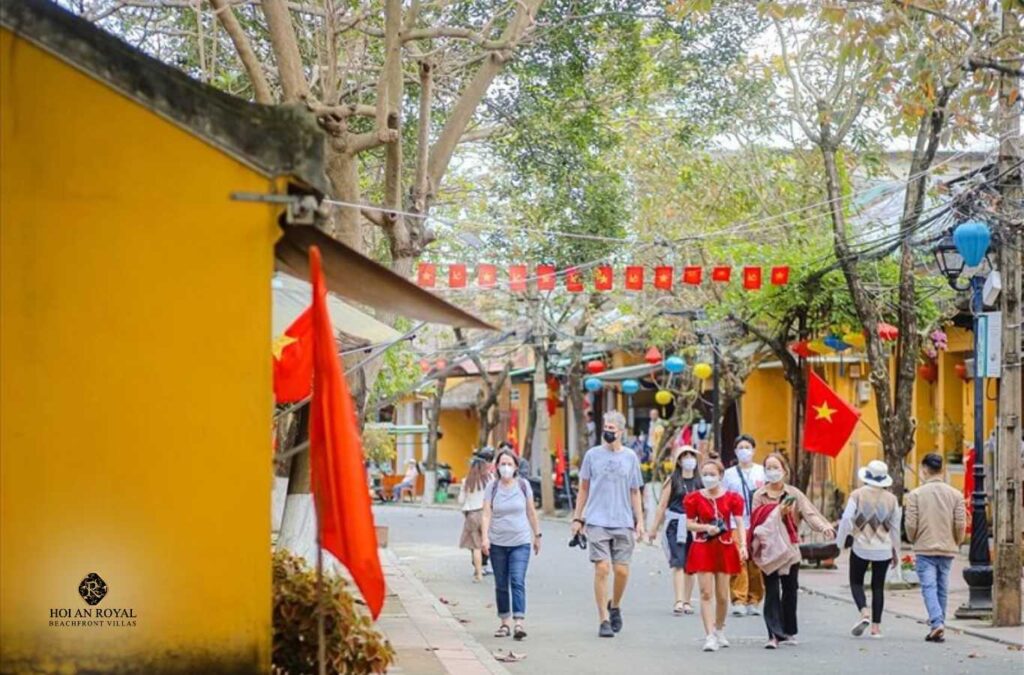
The Friendly, Gentle People of Hoi An
One of the key reasons why Hoi An is a beloved destination is its people—friendly, gentle, and genuinely hospitable. Locals greet visitors with warm smiles and show sincere interest, respect, and pride in their hometown’s history and culture.
Unlike many crowded tourist areas, Hoi An residents are never pushy or aggressive. Their communication is calm and respectful, creating a comfortable and welcoming atmosphere that makes tourists feel valued—almost like family.
Not only are they friendly, but Hoi An locals also have a strong sense of responsibility in preserving and passing on traditional cultural values. From customs and lifestyle to craftsmanship and rituals, everything is maintained with pride and care.
It is the people of Hoi An who play a crucial role in shaping the travel experience. Their simplicity, heartfelt greetings, and quiet dedication leave a lasting impression—drawing many visitors back not just for the scenery, but for the warmth of the people.
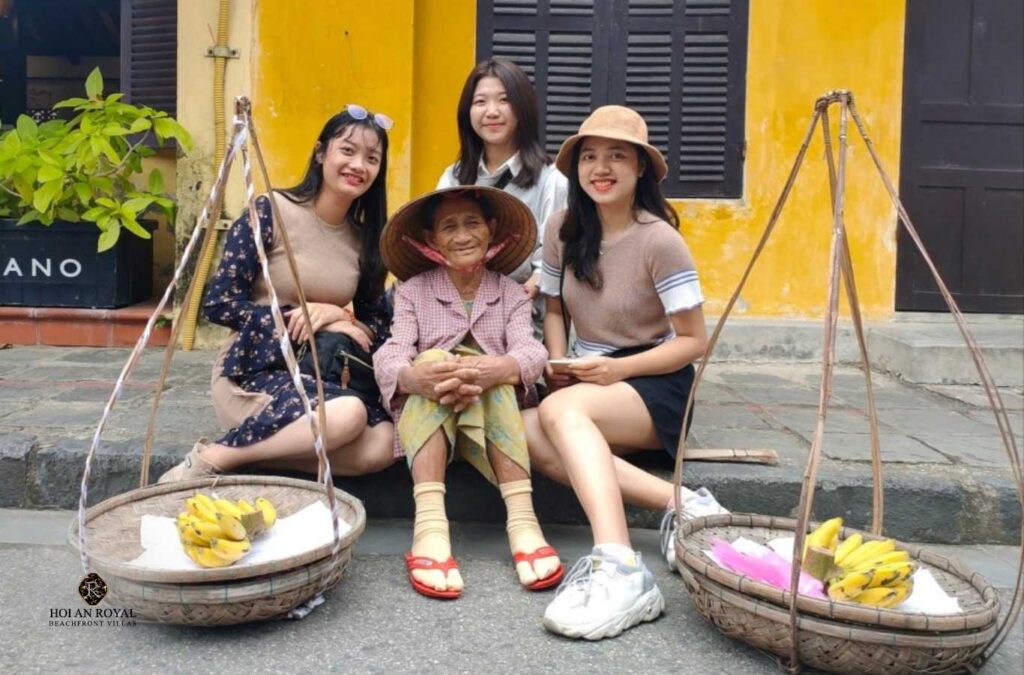
Traditional Arts – A Living Heritage
Hoi An is a place where traditional arts continue to thrive, blending seamlessly with modern life. Art forms like bai choi, hat boi, and water puppetry are still regularly performed, adding a culturally rich dimension to the town.
Bai choi is a unique blend of folk singing and traditional games, popular in Central Vietnam, especially in Hoi An. Its rustic, heartfelt verses reflect the lives and emotions of the locals, offering both entertainment and cultural insight for visitors.
In addition to bai choi, water puppetry and hat boi (classical Vietnamese opera) are performed during festivals and cultural events. These shows allow tourists to witness art forms that have been closely tied to the spiritual life of Hoi An residents for centuries.
Traditional festivals are an essential part of Hoi An’s cultural rhythm. Events like the Hoi An Lantern Festival, Whale Worship, and Ancestor Commemoration for Crafts draw large crowds, creating a lively atmosphere that still feels deeply rooted in local identity.
A modern cultural highlight is the “Hoi An Memories” show—an outdoor theatrical performance that recreates the history and culture of the town through artistic storytelling. This production has received acclaim both locally and internationally.
Thanks to the ongoing preservation and promotion of traditional arts, Hoi An is not just a travel destination but also a living archive of intangible cultural values—contributing to the richness of Vietnamese culture on the global stage. Now you’ve probably gained a clearer understanding of what is Hoi An famous for, haven’t you? But it’s the real-life experience that will make you fall in love with this ancient town in your own unique way.
At Hoi An Royal Beachfront Villas, your journey to discover the soul of Hoi An begins right by the sea—with peaceful mornings, cultural excursions, and local connections that go beyond the ordinary. Take the time to explore and feel it—because Hoi An always has something special for those who truly set foot here.
